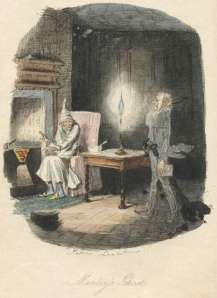How much information do readers need to be able to fully understand what is going on in a story? It may appear an odd complaint, but sometimes when structuring a series of scenes to build tension, authors can be just as guilty of giving a reader too little plot information as too much. Sometimes it’s a case of giving them the right information at the wrong time. But what is certain is that readers don’t enjoy being treated like mushrooms: that is, being kept the dark and having stuff thrown at them unexpectedly.
To illustrate, let’s go back to our two resident Book Nanny characters: Simon and Julia. The last time we met Simon in Building Narrative Tension 1: The Tension Rises…dah, dah…doh?, he was trying to find a good time to tell Julia that their twenty-five year marriage was over. And so we continue:
‘Finally they were alone. This was it. Simon grabbed the opportunity and blurted it out. Typically for Julia, she took the news rather stoically at first. ‘Well, that’s that, I suppose. There’s nothing to be done, is there?’ She inhaled deeply, as if trying to breathe in the entire room. A bitter, strangled cry escaped as she exhaled. It’s all her fault, isn’t it? She’s to blame, I know she is! This would never have happened if you hadn’t been offered that posting in Antarctica.’
So what’s the problem here? Well, personally, as a reader, rather than focussing on the emotion of the moment, I find myself instead taken completely by surprise by the reference to Antarctica. It even overshadows the news that someone else might be responsible for the couple’s marital difficulties. It’s one of those confusing reader moments when you feel obliged to go back to the earlier scene to check you haven’t missed something. Rather than drawing me further into the story, the revelation pushes me away. I feel excluded and left out, as though the characters and the author were in possession of some important information all along, but nobody bothered letting me in on the secret.
As a general rule, to avoid such unnecessary shocks to the narrative, you should err on the side of allowing the reader to be at least on the same knowledge level, or even one step ahead, of your POV characters rather than two jumps behind them.
Reader anticipation is key when building suspense. So set your scene. Give your readers enough information to allow them to think ahead of your character and anticipate what happens next. Think of it as a trail of intriguing information crumbs which increasingly ‘ups the ante’ for a character, rather than bombarding readers with a series of plot surprises or sudden events which can come across as contrivances or manipulations.
So how do you decide which information is important to impart to a reader at the start and which can hold until later? Consider the two pieces of information from Julia in the scene above: (1) that someone else is to blame and (2) Antarctica. Well, Julia’s accusation is exactly that: an accusation. We don’t know if someone else is to blame for the break-up of their relationship – that is something that will be explored over the course of the story. Julia’s reference to it in this scene moves that element of the story on from the first scene and is the right reference in the right place. However, the Antarctica trip is clearly a pivotal plot point for Simon: either he has already been there and something has happened to make him want to end his marriage to Julia, or he has taken the posting for whatever reason and wants to deal with the marriage issue before he leaves. Either way, its existence has a direct bearing on what he wants (there we go with objectives again!) and the steps he takes to achieve his goals. Which is why the mention of it only in the second scene strikes a reader as an omission or exclusion.
So let’s see what happens when we add Antarctica to the opening paragraph of the scene in my previous Building Narrative Tension 1 post:
‘Do it, do it now!’ The small voice in his head urged Simon on as he made his way to the greenhouse. In three weeks’ time, he would be holed up in the frozen wastelands of Antarctica, and it would be too late. But Julia was alone at last, and he would tell her now. That it was over. Them. After twenty-five years, three children, five dogs and a grandchild. Yes, he would do it. He would tell her. She looked up at him as he reached the greenhouse door.
Much better, don’t you agree? Putting Simon under time pressure to have the ‘Big Talk’ gives this scene a far greater sense of urgency. It also provides an intriguing hook for the reader as we want to know more about his upcoming trip to the South Pole. In fact, even without Julia’s allegations in the following scene, we will probably still wonder about the someone or something Simon is running to or away from in Antarctica. And rather than being out of the loop, we readers are now fairly chomping at the bit to know more. Job done!



